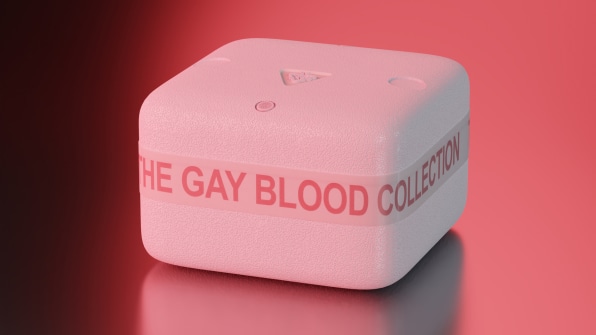In 2018, a creative team printed T-shirts with ink made from the blood of gay men. The “Blood is blood” initiative was meant to protest a controversial Food and Drug Administration (FDA) rule forged at the height of the AIDS crisis, which banned men who have sex with men (MSM) from donating blood. The policy was updated in 2015, then again in 2020, but there are still limitations on whether gay and bisexual men can donate blood. Today, it would seem that the FDA considers a gay man a bigger threat to the blood supply than a straight man who was treated for chlamydia or genital herpes.
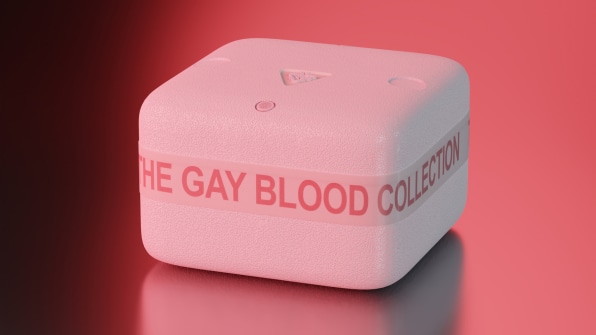
That’s why the same creative team, composed of the agency Mother and artist Stuart Semple, has released an entire paint collection, also made from real blood. The Gay Blood Collection includes a fountain pen, screen printing ink, acrylic paint, spray paint, and a marker, all in the same deep red.
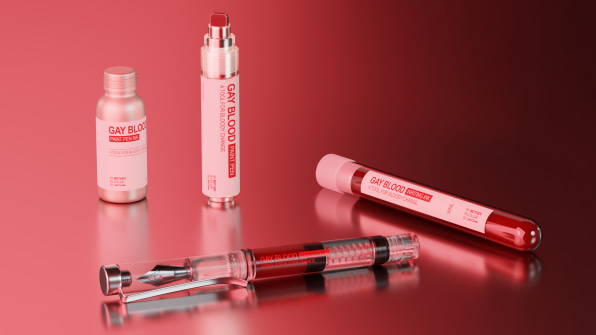
Ranging from $30 to $200 apiece, the supplies are designed to be protest tools for people to print shirts, paint protest signs, and/or sign petitions to fight back against the FDA’s homophobic and outdated policies. In an effort to support those affected by the policy, all proceeds from the sales will go to Callen-Lorde Community Health Center, a New York City-based primary care center that serves LGBTQ communities.
Activists have long used color as a form of political protest. In the United States, thousands of women donned pink pussy hats to rail against Trump’s misogyny after he became president. In Mexico, every year on International Women’s Day, women march against violence by wearing purple, a color long associated with feminist movements. And in Iran, protesters, wrapped up in green, took to the streets to protest the 2009 elections in what became known as the Green Revolution.
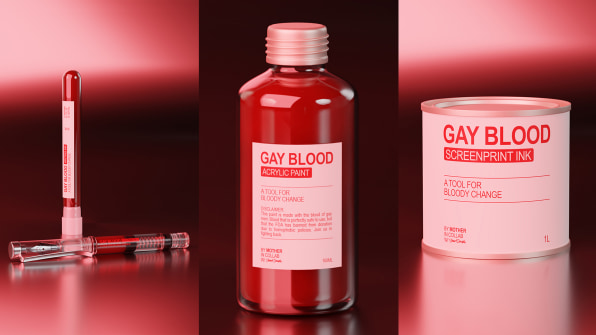
Now, Semple and Mother are turning to the most fundamental color of all—blood red. “Color’s emotive, and if you spend any time looking at art, put yourself in front of a Van Gogh, put yourself in front of a Rothko, you feel something,” says Semple, who is known for democratizing color by cloning the trademarked Tiffany Blue, and replicating Vantablack, the world’s blackest black, after artist Anish Kapoor secured exclusive rights to the color. “When we saw those wonderful women’s marches, with that bright pink color on those banners—can you imagine that being as potent without that color being used?”
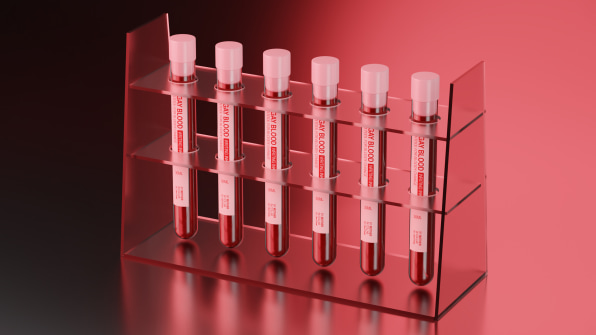
With the Gay Blood Collection, however, the idea transcends color. “My blood and your blood aren’t that much different,” says Semple. “Our blood could be purple; the point is we’ve all got the same stuff running through us.”
Intriguingly, Semple says that blood isn’t an effective colorant, at least not in the quantities needed to create high-quality paint. If stored improperly, blood can grow harmful bacteria, and when it’s exposed to air, it turns brown. Too much blood in paint can also impact the consistency and viscosity of the paint. So, in the case of the acrylic paint, the team had to “encapsulate” small quantities of it inside resin binders.
To mimic the color of blood, they used a blend of pigments, both mineral and synthetic. As for the actual blood, the purpose is more symbolic than practical. “You’re painting with the blood of a creative person who’s donated it,” says Semple. “I’m not relying on it to boost the color or make it stick, I’m relying on it to convey meaning.”
It’s worth noting that the Gay Blood Collection has launched the same year that the American Red Cross declared its worst blood shortage in over a decade. If the outdated and discriminatory FDA policy were eliminated, more than 600,000 pints of blood could be added to the system every year. Perhaps that mind-boggling number should be painted on a protest sign—in blood red, of course.

